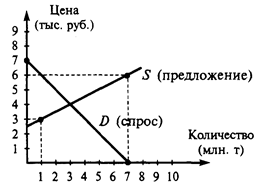Copper and bronze
After tin and lead, the next metal to be smelted appears to have been copper. How the discovery came about is a matter of much debate. Campfires are about 200 °C short of the temperature needed for that, so it has been conjectured that the first smelting of copper may have been achieved in pottery kilns. The earliest known instances in Europe and the Near East were found in Persia, dated about 6000 BC. The first smelted copper artifact was thought to be a mace head found in Can Hasan, Turkey and dated to 5000 BC. However, this now appears to be hammered native copper. The earliest current evidence of copper smelting, dating from between 5500 BC and 5000 BC, has been found in Pločnik and Belovode, Serbia. The development of copper smelting in the Andes, which is believed to have occurred independently of that in the Old World, may have occurred in the same way. By combining copper with tin and/or arsenic in the right proportions one obtains bronze, an alloy which is significantly harder than copper. The first copper/arsenic bronzes date of 4200 BC from Asia Minor. The Inca bronze alloys were also of this type. Arsenic is often an impurity in copper ores, so the discovery could have been made by accident; but eventually arsenic-bearing minerals were intentionally added during smelting. Copper/tin bronzes, harder and more durable, were developed around 1500 BC or 3200 BC, also in Asia Minor. The discovery of copper smelting and bronze manufacture had a significant impact on the history of the Old World. The metal was hard enough to make weapons, which were heavier, stronger, and more resistant to impact-related damage than their wood, bone, or stone equivalents. For several millennia, bronze was the material of choice for weapons such as swords, daggers, battle axes, spear and arrow points, as well as protective gear such as shields, helmets, shin guards, and other body armor. Bronze also supplanted stone, wood and organic materials in all sorts of tools and household utensils, such as chisels, saws, adzes, nails, blade shears, knives, sewing needles and pins, jugs, cooking pots and cauldrons, mirrors, horse harnesses, and much more. In turn, bronze tools brought about an increase in the quantity, quality, and complexity of manufactured products, from buildings to leather goods. Tin and copper also contributed to the establishment of trade networks spanning large areas of Europe and Asia, and had a major effect on the distribution of wealth among individuals and nations. Casting bronze ding-tripods, from the Chinese Tiangong Kaiwu encyclopedia of Song Yingxing, published in 1637. The process through which the smiths learned to produce copper/tin bronzes is once again a mystery. The first such bronzes were probably a lucky accident from tin contamination of copper ores, but by 2000 BC we know that tin was being mined on purpose for the production of bronze. This is amazing, given that tin is a semi-rare metal, and even a rich cassiterite ore only has 5% tin. Also it takes special skills (or special instruments) to find it and locate the richer lodes. But, whatever steps were taken to learn about tin, these were fully understood by 2000 BC.
|




